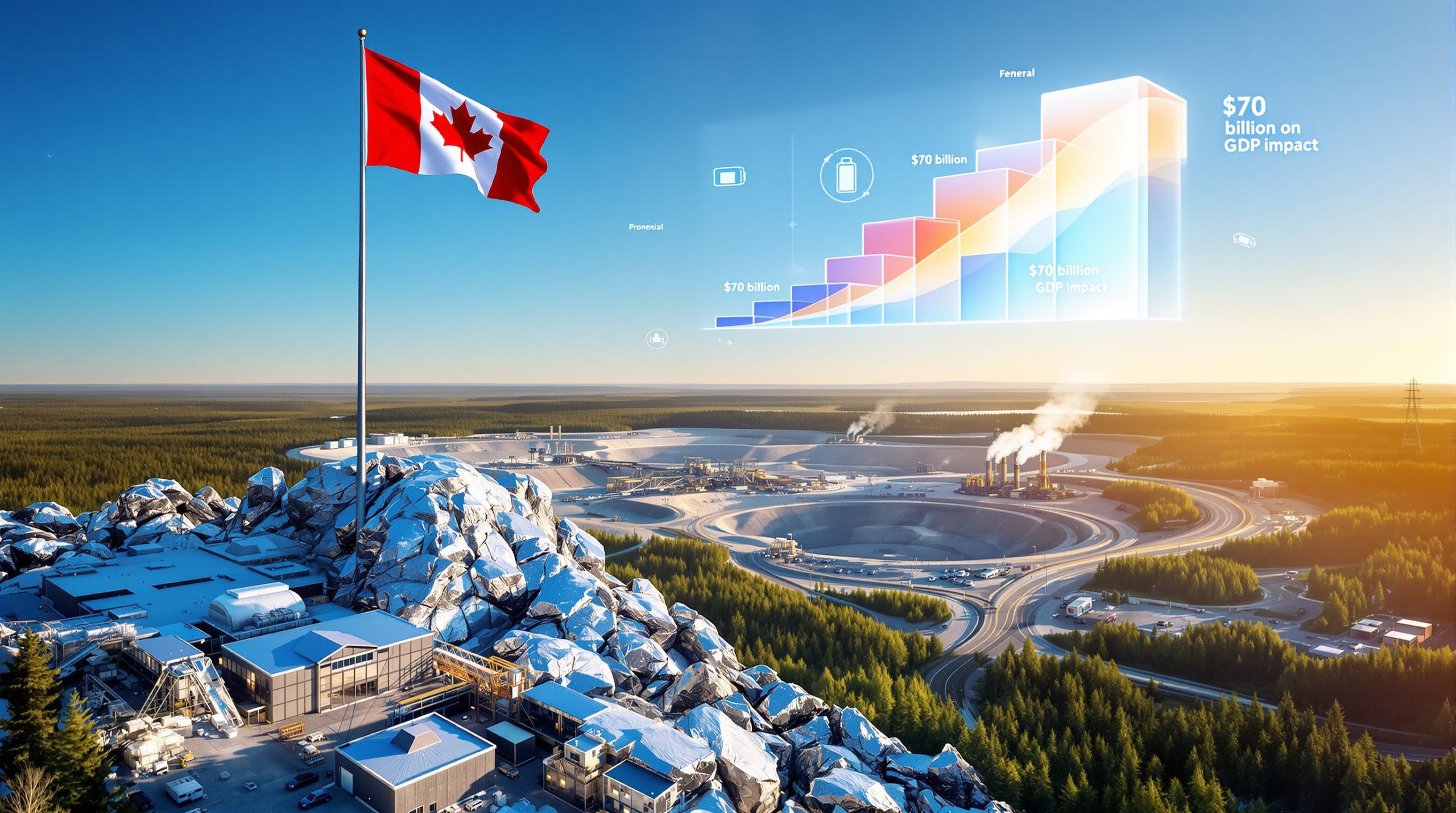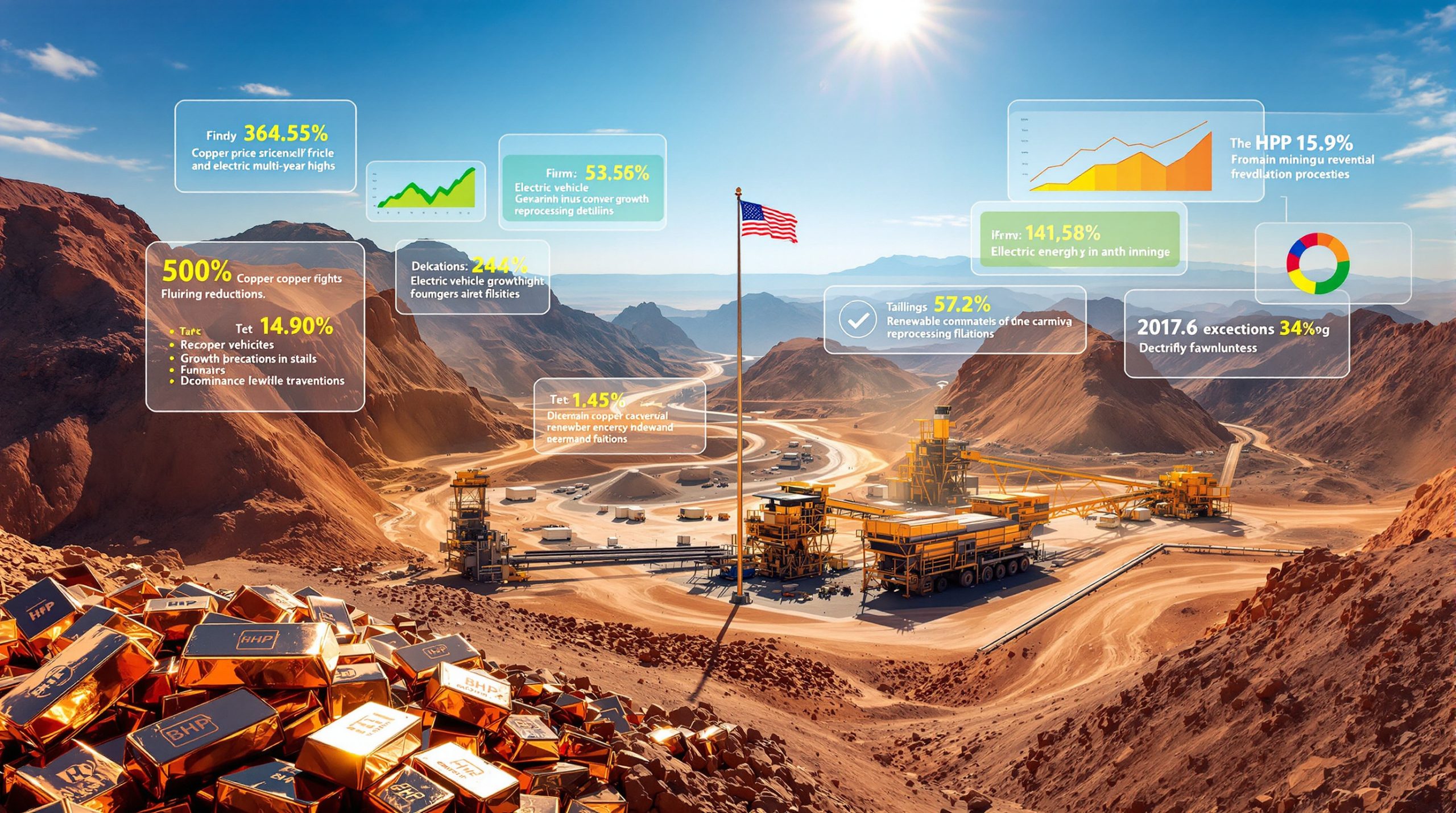Understanding Current Rare Earth Market Dynamics
In the complex world of rare earth trading, an interesting phenomenon is unfolding as July 2025 progresses. The market is experiencing remarkable price stability despite a noticeable slowdown in transaction volumes. This unusual equilibrium deserves closer examination as it reveals important underlying trends for investors, industry participants, and market observers.
Market Overview and Current Conditions
The rare earth trading landscape currently exhibits a dichotomy of price stability against declining activity levels. According to the latest Shanghai Metal Market (SMM) data, prices across most rare earth elements have maintained consistency despite completion of the concentrated procurement period by major magnetic material enterprises.
Key price points as of mid-July 2025 show remarkable resilience:
- Praseodymium-Neodymium (Pr-Nd) oxide: 453,000-455,000 yuan/mt
- Dysprosium oxide: 1.66-1.68 million yuan/mt (showing recent upward movement)
- Terbium oxide: 7.16-7.2 million yuan/mt
- Gadolinium oxide: 164,000-166,000 yuan/mt
- Holmium oxide: 525,000-530,000 yuan/mt
- Erbium oxide: 308,000-314,000 yuan/mt
This stability reflects a market in equilibrium despite reduced transaction volumes, as traders and buyers reassess positions following the completion of major procurement cycles.
Recent Price Movements in Key Rare Earth Materials
Examining price trends more closely reveals subtle but significant movements within the broader stability. Dysprosium oxide has shown the most notable strength, pushing toward the upper end of its range at 1.68 million yuan/mt. This increase comes despite general market hesitation, indicating specific supply constraints or strategic buying in this segment.
In the metal and alloy markets, pricing shows similar consistency:
- Pr-Nd alloy: 553,000-558,000 yuan/mt
- Dysprosium-iron alloy: 1.59-1.61 million yuan/mt
- Terbium metal: 8.85-8.9 million yuan/mt
- Gadolinium-iron alloy: 159,000-161,000 yuan/mt
- Holmium-iron alloy: 525,000-530,000 yuan/mt
- Lanthanum-cerium alloy: 17,000-19,000 yuan/mt
The price stability in metal alloys, particularly the strategically important Pr-Nd alloy, suggests manufacturers are maintaining production levels despite the broader market hesitation, protecting against potential future supply constraints.
Why Is Trading Activity Slowing in the Rare Earth Market?
The current slowdown in rare earth trading activity can be attributed to several interconnected factors that have created a temporary market plateau.
Impact of Procurement Cycles
The rare earth market operates in distinct procurement cycles, with the latest concentrated buying period having recently concluded. Major magnetic material enterprises completed their planned purchases, depleting the available supply of lower-priced materials. This cyclical pattern is typical for the industry but has been particularly pronounced in this quarter.
"The completion of concentrated procurement by major magnetic material enterprises has significantly altered market dynamics. Low-priced supply sources have been rapidly depleted following recent tender activities, creating a natural pause in the market," notes SMM's latest market analysis.
This cyclical procurement behavior creates predictable patterns of activity followed by periods of assessment and recalibration. Currently, the market is in this transitional phase between major buying cycles.
Growing Wait-and-See Sentiment
Market psychology plays a crucial role in the current slowdown. Both buyers and sellers have adopted a more cautious stance, creating a self-reinforcing cycle of reduced activity. This wait-and-see approach has several drivers:
- Recent price increases: Previous upward movements in dysprosium oxide prices have caused buyers to hesitate, hoping for corrections.
- Inventory positions: Many downstream enterprises completed stockpiling activities and now feel adequately supplied for near-term production needs.
- Uncertainty about demand trends: Questions about end-product consumption rates for magnets and other rare earth-containing products create hesitation.
- Seasonal factors: Mid-summer traditionally sees reduced industrial activity in many sectors.
The combination of these factors has created a temporary liquidity reduction in the market, with both sides waiting for clear signals before committing to significant new positions.
How Are Light and Heavy Rare Earth Markets Performing Differently?
The rare earth market isn't monolithic—different segments show distinct behaviors based on supply-demand dynamics, industrial applications, and strategic considerations.
Light Rare Earth Market Dynamics
The light rare earth segment, particularly praseodymium and neodymium compounds, demonstrates relatively stronger fundamentals:
- Supply tightening: The recent concentrated tender activities dramatically reduced the availability of low-priced materials in this category.
- Strategic importance: Pr-Nd compounds form the backbone of the permanent magnet industry, creating consistent baseline demand.
- Active stockpiling: Forward-looking enterprises continue selectively building inventories of these materials despite the general market slowdown.
The Pr-Nd alloy market showcases this resilience, with prices holding firmly in the 553,000-558,000 yuan/mt range despite reduced transaction volumes. This reflects confidence in the medium-term outlook for these materials, which are essential for critical minerals and energy transition technologies.
Medium-Heavy Rare Earth Market Conditions
By contrast, heavy rare earth elements like dysprosium and terbium show more complex market patterns:
- Weaker immediate demand: Downstream enterprises have shifted focus to light rare earths, reducing active procurement of heavy elements.
- Price resistance points: Despite supply constraints, dysprosium oxide prices face resistance at 1.68 million yuan/mt as buyers evaluate substitution options.
- Transaction challenges: Liquidity in heavy rare earth segments has declined more significantly than in light rare earths, with fewer completed deals.
Terbium oxide's price stability at the 7.16-7.2 million yuan/mt level demonstrates the tenuous balance in this segment—prices neither rising due to weak demand nor falling due to limited supply. This stalemate characterizes much of the heavy rare earth market currently.
What Supply and Demand Factors Are Influencing the Market?
The rare earth market's current equilibrium reflects a complex interplay of supply and demand factors that extend beyond simple transaction metrics.
Supply-Side Considerations
On the supply side, several key factors are shaping market conditions:
- Inventory depletion: The concentrated procurement activities have significantly reduced available stocks of lower-priced materials, particularly in the light rare earth category.
- Producer discipline: Suppliers have maintained price discipline despite the slowdown, avoiding discounting that could undermine market stability.
- Regional variations: Supply conditions vary significantly across mining regions, with some areas facing stricter environmental controls or production quotas.
- Production adjustments: Some producers have modestly reduced output in response to the slowdown, helping maintain price levels.
These supply-side factors create a foundation that supports current price levels despite reduced transaction activity. Additionally, recent China rare earth trade disruption events have added another layer of complexity to the supply situation. Producers appear confident that demand will rebound once the current wait-and-see period concludes.
Demand-Side Analysis
The demand picture shows interesting patterns across the value chain:
- Strategic vs. immediate purchasing: Many enterprises have shifted from immediate-need buying to more strategic, opportunistic approaches.
- Inventory positions: After completing significant stockpiling, many downstream magnetic material enterprises now hold sufficient inventory for near-term production.
- Sectoral variations: Demand strength varies significantly by end-use sector, with EV and renewable energy applications showing more resilience than consumer electronics.
- Speculative elements: Some portion of previous buying may have been speculative rather than consumption-driven, creating temporary demand inflation.
The combination of these factors has created a natural pause in buying activity as enterprises digest previous acquisitions and assess future requirements.
What Are the Short-Term Market Expectations?
Looking ahead, market participants must navigate a period of uncertainty while positioning for potential opportunities.
Price Trajectory Forecasts
The consensus outlook suggests prices will remain "stable with a slight rise" in the coming weeks. Several factors support this projection:
- Supply constraints: The depletion of low-priced inventory creates a floor for prices despite reduced demand.
- Production costs: Underlying production costs remain stable, limiting downside potential.
- Strategic importance: The critical nature of rare earths for high-tech manufacturing creates consistent baseline demand.
- Potential catalysts: New procurement announcements from major buyers could quickly shift market dynamics.
Price increases are most likely in the light rare earth segment, particularly Pr-Nd compounds, while heavy rare earths may remain more range-bound until clearer demand signals emerge. According to a thorough rare earth reserves analysis, production capacities remain constrained in many regions, providing fundamental support for prices.
Trading Volume Predictions
Transaction activity is expected to remain subdued in the immediate term but should gradually recover as market participants adjust to the new equilibrium:
- Near-term (2-3 weeks): Continued cautious positioning with selective, opportunistic transactions.
- Medium-term (1-2 months): Gradual recovery as downstream enterprises begin replenishing inventories.
- Potential accelerators: New tender announcements or policy changes could rapidly increase activity levels.
Market participants should monitor transaction volumes closely, as even modest increases could signal the beginning of the next activity cycle.
How Do Rare Earth Prices Compare Across Product Categories?
Understanding relative price movements across the rare earth spectrum provides important insights into market dynamics and potential opportunities.
Oxide Market Price Comparison
A comprehensive price analysis reveals important trends:
| Rare Earth Oxide | Current Price (yuan/mt) | Recent Trend | Strategic Significance |
|---|---|---|---|
| Pr-Nd oxide | 453,000-455,000 | Stable | High (EV, wind power) |
| Dysprosium oxide | 1.66-1.68 million | Slight increase | High (high-performance magnets) |
| Terbium oxide | 7.16-7.2 million | Stable | High (specialized magnets) |
| Gadolinium oxide | 164,000-166,000 | Slight increase | Medium (medical, nuclear) |
| Holmium oxide | 525,000-530,000 | Stable | Medium (specialized applications) |
| Erbium oxide | 308,000-314,000 | Stable | Medium (fiber optics, lasers) |
This comparison highlights how strategically important elements like dysprosium have maintained upward momentum despite the general market slowdown, while less critical elements show greater price stability.
Metal and Alloy Market Analysis
The processed metal and alloy segment shows similar patterns but with important variations:
| Metal/Alloy | Current Price (yuan/mt) | Recent Trend | Price Premium Over Oxide |
|---|---|---|---|
| Pr-Nd alloy | 553,000-558,000 | Stable | ~22% |
| Dysprosium-iron alloy | 1.59-1.61 million | Stable | ~4% discount to pure oxide |
| Terbium metal | 8.85-8.9 million | Stable | ~24% |
| Gadolinium-iron alloy | 159,000-161,000 | Stable | ~3% discount to pure oxide |
| Lanthanum-cerium alloy | 17,000-19,000 | Stable | N/A (mixed compound) |
The price transmission between oxides and metals shows interesting variation, with strategic elements commanding higher processing premiums. This reflects both processing costs and strategic value addition in the supply chain.
FAQ: Rare Earth Market Trading
What factors are most influencing rare earth prices in July 2025?
The primary factors shaping the market currently include:
- Completion of procurement cycles: Major magnetic material enterprises have concluded their concentrated buying period, reducing immediate demand pressure.
- Depletion of low-priced supply: Previous active buying eliminated most lower-priced inventory from the market.
- Wait-and-see sentiment: Both buyers and sellers have adopted a more cautious stance, creating a temporary reduction in transaction volumes.
- Strategic stockpiling: Some enterprises continue selectively building inventories of critical materials despite the general slowdown.
These factors combine to create the current unusual situation of price stability despite reduced transaction activity.
How do procurement strategies differ between light and heavy rare earth buyers?
Light and heavy rare earth procurement approaches show important distinctions:
- Light rare earth strategy: Buyers focus on strategic stockpiling of Pr-Nd compounds, maintaining minimum inventory levels even during market slowdowns due to their critical importance for magnet production.
- Heavy rare earth approach: More opportunistic buying based on immediate production needs, with greater price sensitivity and willingness to delay purchases during uncertain periods.
- Budget allocation: Many enterprises prioritize light rare earth procurement in their materials budget, allocating 60-70% to these elements versus 30-40% for heavy rare earths.
- Timing variations: Light rare earth procurement tends to be more consistent year-round, while heavy rare earth buying shows greater seasonality and opportunistic patterns.
Understanding these differences helps explain the current stronger relative performance of light rare earth markets.
What indicators should investors watch to anticipate rare earth market changes?
Key indicators for market participants to monitor include:
- Transaction volume recovery: An increase in completed deals often precedes price movements.
- New tender announcements: Major procurement announcements from magnetic material enterprises can rapidly shift market dynamics.
- Wait-and-see sentiment shifts: Changes in market psychology, often visible through quote request volume before actual transactions.
- Production adjustments: Announcements of output changes from major producers can signal their market expectations.
- Policy developments: Regulatory changes affecting mining quotas, export restrictions, or environmental requirements.
Early identification of these signals can provide important advantages in positioning for market shifts. For those looking to dive deeper, the Lowyinstitute's analysis of China's rare earth advantage offers valuable context on geopolitical factors influencing the market.
How does the current market compare to previous rare earth trading cycles?
The current market shows both similarities and differences compared to historical patterns:
- Similar cycle completion: The pattern of concentrated procurement followed by digestion periods mirrors previous cycles, particularly Q3 2024.
- Greater price stability: Current price stability despite reduced volumes is somewhat unusual compared to historical patterns, which typically showed greater price volatility during slowdowns.
- Recovery timeframes: Previous similar slowdowns typically lasted 4-8 weeks before activity began normalizing.
- Leading indicators: Transaction volume recovery has historically preceded price movements by approximately 2-3 weeks.
This historical context suggests the current slowdown is following normal cyclical patterns and will likely resolve in a similar timeframe.
Market Outlook: Navigating the Current Rare Earth Landscape
Strategic Considerations for Market Participants
Market participants face important strategic decisions in the current environment:
- Inventory management: Balancing adequate supply security against capital efficiency during uncertain periods.
- Pricing strategy: Determining when to accept current price levels versus waiting for potential adjustments.
- Market timing: Identifying optimal entry/exit points as the market transitions between procurement cycles.
- Risk mitigation: Developing contingency plans for both supply disruptions and potential price volatility.
"The most successful market participants during transitional periods typically maintain disciplined, systematic approaches rather than making reactive decisions based on short-term market movements," notes an industry analyst from SMM.
A balanced approach that maintains essential procurement while preserving flexibility for opportunistic moves typically yields the best results during such market phases. Recent developments in European CRM supply insights also offer valuable perspectives on diversification strategies.
Potential Market Catalysts to Monitor
Several potential catalysts could shift the market from its current equilibrium:
- New procurement announcements: Major tender announcements from leading magnetic material enterprises could rapidly accelerate activity.
- Production adjustments: Significant changes in output from major producers would alter supply-demand balance.
- Policy developments: Changes in mining quotas, export restrictions, or environmental regulations could impact availability.
- Downstream demand signals: Changes in end-use sectors like EVs, wind turbines, or consumer electronics will eventually flow back to raw material markets.
- Global economic indicators: Broader economic trends that affect industrial production and high-tech manufacturing.
Market participants should maintain vigilant monitoring of these potential catalysts while positioning appropriately for the next market phase. Recent rare earth supply agreement announcements highlight how quickly new partnerships can impact market dynamics.
In conclusion, the rare earth trading market's current price stability amid slowing activity represents a transitional phase between procurement cycles rather than a fundamental shift in market dynamics. Underlying supply-demand fundamentals remain sound, particularly for strategically important elements like praseodymium, neodymium, and dysprosium. As the market digests previous acquisitions an
Want to Know When Major Mineral Discoveries Hit the Market?
Discovery Alert's proprietary Discovery IQ model provides instant notifications when significant mineral discoveries are announced on the ASX, giving you a crucial market advantage. Explore why historic discoveries have generated substantial returns by visiting Discovery Alert's dedicated discoveries page and start your 30-day free trial today.




